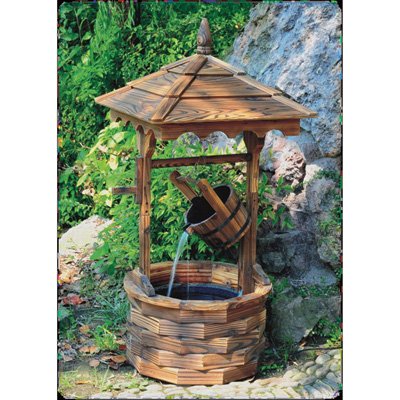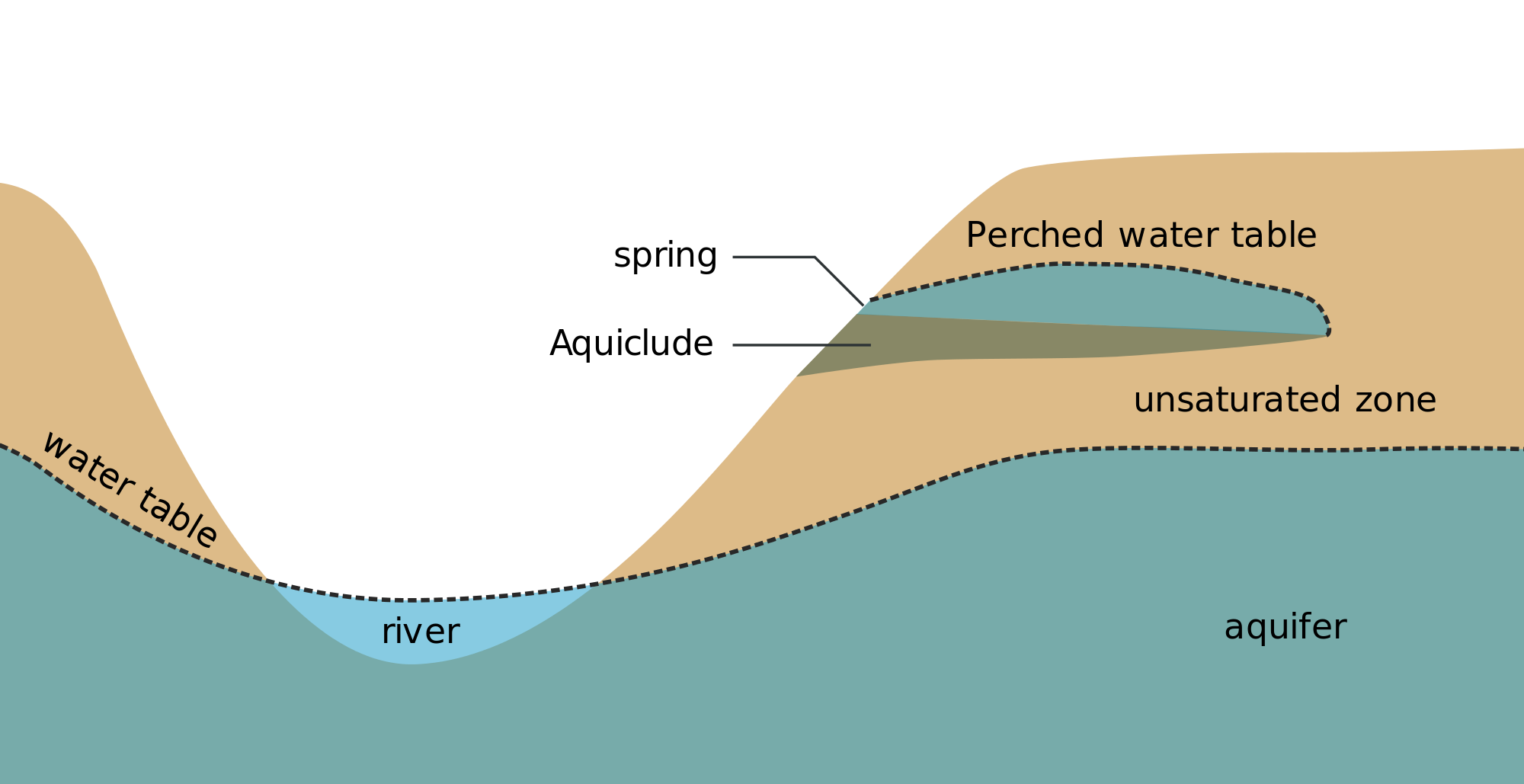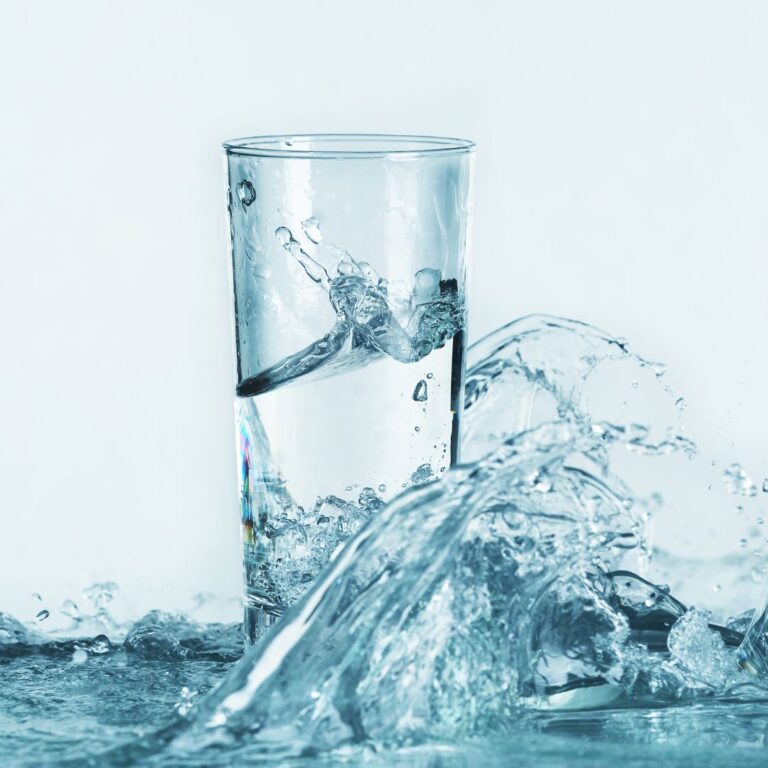What Is A Water Table? (In SIMPLE and Plain English)
The concept of a “water table” in geology plays an important role in relation to the water used in agriculture.
There are several different factors that can affect the level of groundwater on the planet. Geologists keep track of this because it helps them make sure that we have adequate water supplies.
However, before we examine all the factors that are involved and affect the water table and groundwater level, let’s first look at the definition of a water table.
Water Table Definition
The water table refers to the boundary between sea and earth i.e. water-saturated land and unsaturated land but specifically the upper boundary.
Most of the water that we use is below the water level. But it’s important to note that the water level of one region is not always the same as the level in another.
You will find things like rocks and earth once you get below the water level. However, the ground under a water level contains groundwater, often in small sacks. This means that it is possible for you to dig through the water table before you access the water underneath. These water bags are often called “aquifers” by geologists.
Apart from being different from location to location, the water level does not stay the same all year round.
For instance, the topography of the earth may change. When this happens this can also cause the water level to change.
There are other factors that affect the height of the water level like snow fall or rain.
Why are Water Tables Important?
The water table definition provided in the earlier section doesn’t indicate why water tables are so important and even necessary. But for many centuries, people break into these tables so that they can access water saturated soil.
But for many centuries, people break into these tables so that they can access water saturated soil.
A good way to understand this is to think about water wells. You access water by digging deep into the ground and going below the aquifers and saturated rocks. This is what enables you to release or access the water. The result of this is that you will be able to access a constant source of water from the well.
Being able to access groundwater is what provides us with about 98% of the water we drink. This is why understanding the water table and ground water levels are so important, it’s indispensable for human survival.
The Problems
Groundwater plays a role in the growth of plants and it is used in agriculture. Irrigation systems often rely on saturated soils to deliver the water needed to grow crops.
 The depth of the hole determines the amount of water that accumulates in it. In addition, some regions are less saturated than others.
The depth of the hole determines the amount of water that accumulates in it. In addition, some regions are less saturated than others.
In irrigation systems, there are several factors that affect the geology of the water level and how well the water flows under the table. Digging in sterile soil does not produce much water.
By properly connecting these openings, the water below the water level can flow freely, which facilitates access. This is why excavators should be aware of the openings they create in the earth.
It plays a crucial role in whether humans can live off the earth. As already mentioned, the geology of the low water level can prevent access to the groundwater supply. That’s why you see sterile and water-free areas like deserts.
This is a problem and there are several factors that influence the geology of the groundwater table. Any of these problems can hinder access to fresh groundwater. Over time these problems can affect agricultural processes.
Factors That Influence Water Tables
There are 3 main problems affecting the geology of groundwater and water tables. These principally concern the changes in the height of the water level.
1. Human Activity
This all depends on the way human beings treat the soil which can affect both the geology of the groundwater table. This can be due to things like “the cleansing of the land” which is often followed by construction works. The change here can also affect the topology of the country. The typical result of this is that it leads to soil erosion.
Of course, things like concrete pavements in a city prevent soil from absorbing water. This also means that it prevents it from flowing into other areas.
Another problem caused by human activity is irrigation for agriculture because that can also reduce the water level. Intensive use of such techniques can make the irrigation systems themselves unusable until the groundwater is filled. Combine this with a dry climate and there can be lots of negative effects on things like plant growth.
2. Climate
As has already been discussed, things like heavy rainfall or a high humid summer can affect the level of the groundwater table. This also has an impact on access to the groundwater.
The problem is that it can also complicate the absorption of additional water through the ground.
But the opposite is true. Places that have dry weather, little rain and locations that have a low amount of rainfall means that there is no water to help absorb soil. Overtime, this will reduce the level of water.
3. The Soil
The composition of the soil is a big determining factor of the water level in a region. For instance, soil that has a lot of clay probably won’t absorb water as much. This results in a low water level. Similarly, rocky areas and regions with compacted soil tend to have low water levels.
On the other hand there are certain regions with loose soil that will be able to absorb water a lot more easily. This is the type of soil that you will find in tropical forests and similar regions. Sandy soil and sand itself will typically have a higher level of groundwater. You can see for yourself by trying to dig a hole in the sand the next time that you’re at the beach.
Water Table Geology?
Water tables are a key term in geology.
By understanding and knowing where the water tables are, we can know how to access the groundwater beneath. Especially as most human beings still depend on this subterranean water to live as it contains about 30% of the world’s freshwater supply.
 Therefore, it’s an important concept for us to both understand and take the problems that affect the groundwater level seriously.
Therefore, it’s an important concept for us to both understand and take the problems that affect the groundwater level seriously.
It’s also important to understand the effect that we as human beings have on the water table.
This includes things like being careful about irrigation. For instance, how the water level can rise.
Understanding the concept of a water table is especially important if you are considering getting a well installed or buying a well pump.







